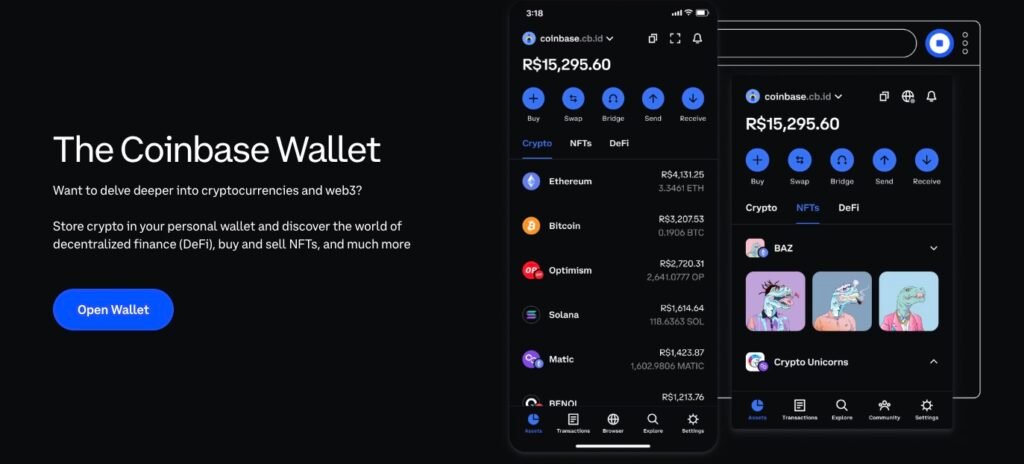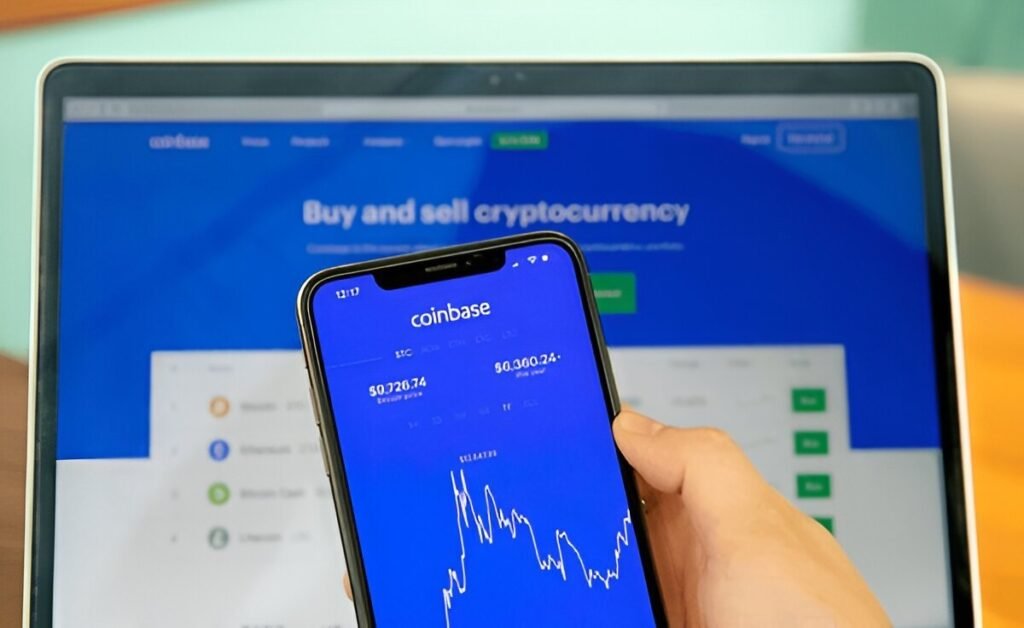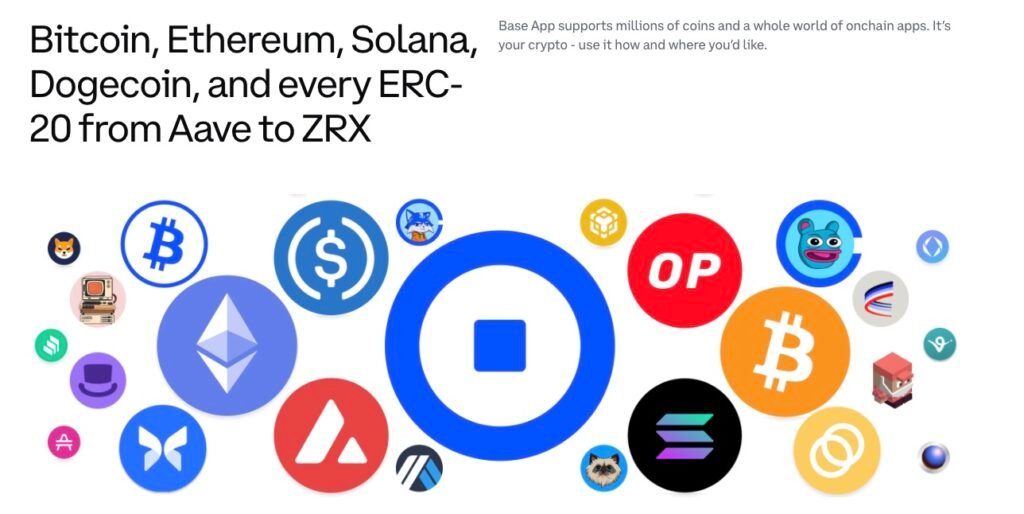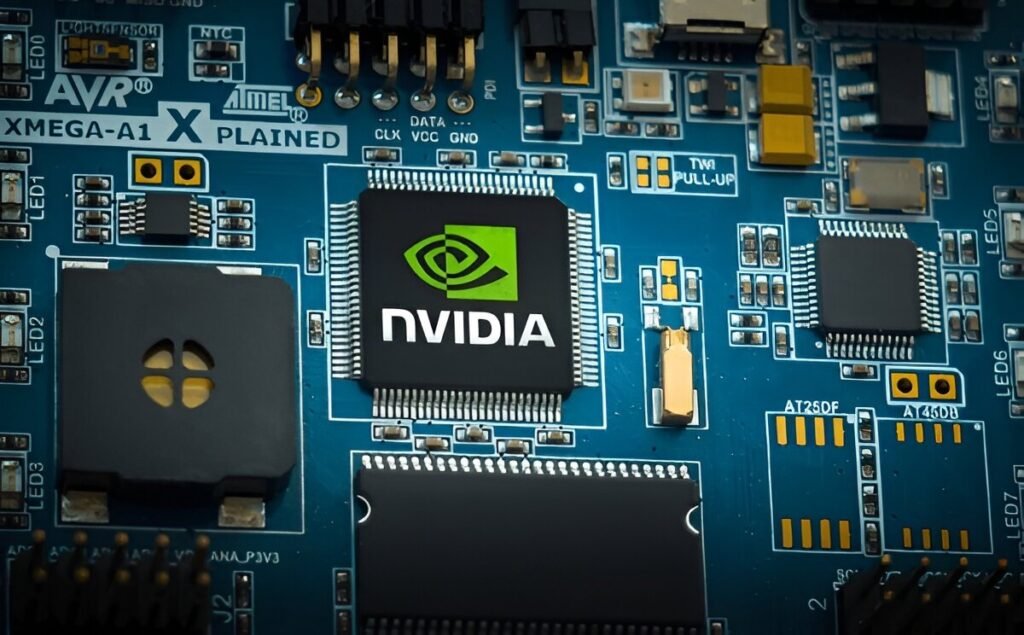Ever noticed how some apps become more than tools? They turn into daily habits, cultural touchpoints, even identity markers. For millions dabbling in crypto, Coinbase has quietly become just that — a portal not only into the world of digital currency, but into a lifestyle shaped by volatility, optimism, and an evolving trust in technology.
A few years ago, Coinbase was mainly for the crypto-curious. Now, it’s a heavyweight — a publicly traded company, a crypto wallet provider, and increasingly, a vision for what a mainstream financial ecosystem could look like. But its journey hasn’t been linear. It’s stumbled, surged, pivoted, and rebranded — often all at once.
In this story, we’ll unpack how Coinbase isn’t just tracking market trends — it’s helping define them. Whether you’re a stockholder, a crypto trader, or just watching from the sidelines, Coinbase offers a fascinating case study in how technology, culture, and finance intersect in real time.
Get up to $200 for getting started
Grab your Coinbase account through the affiliate link above.
Coinbase: A Wallet, A Brand, A Movement
Coindbase didn’t start as a cultural icon — but in the crypto world, few brands have come to symbolize as much. It began as a simple gateway: a way to buy Bitcoin without the jargon or the fear. But over time, it evolved into something more intimate. For users, logging into Coindbase feels like stepping into a digital frontier — one where your financial decisions reflect your values, your risks, and sometimes, your identity.
From the start, Coindbase focused on design and usability, almost Apple-like in its clean, reassuring interface. That might sound superficial, but for crypto — often buried under intimidating terms and clunky platforms — simplicity was radical. It told a new audience: this world is for you, too.
And as the brand matured, so did its messaging. No longer just a place to trade, Coindbase started to frame itself as a movement — a mission to decentralize finance, challenge banking norms, and push for regulatory clarity. Its marketing tapped into that idealism, blending tech innovation with a whiff of rebellion. In short, it became a brand not just for users, but for believers.
Coinbase and the Changing Face of Finance
From Banks to Blockchains
For decades, traditional banking shaped our sense of financial safety. But Coinbase marked a shift — not just in how people store value, but in what they trust. At its core, Coinbase replaced marble counters and bank tellers with algorithms and wallet keys. And remarkably, people followed. Its early users were tech-savvy rebels; now they include retirees, side hustlers, and parents building crypto portfolios for their kids.
Trust, Rewritten in Code
This trust didn’t appear overnight. It was earned through licenses, compliance, and — paradoxically — regulation. Unlike some crypto platforms that played cat-and-mouse with global authorities, Coinbase leaned into policy. It went public. It held reserves. And even amid controversies, it positioned itself as the “grown-up” in crypto’s chaotic sandbox. That posture turned Coinbase into a strange but stable bridge between the old guard of finance and a digitized, decentralized future.
Culture Meets Capital
Here’s what’s really interesting: Coinbase didn’t just ride the crypto wave — it helped shape it. By translating blockchain into mainstream vocabulary, it made the space culturally accessible. Suddenly, investing in Ethereum wasn’t a hacker’s hobby; it was a cocktail conversation. The app made financial experimentation feel normalized, even stylish. It didn’t just open wallets — it opened imaginations.
The Stock Story — Hype, Hope, and Headwinds
When Crypto Went Wall Street
In April 2021, Coinbase did something unprecedented — it became the first major crypto company to go public via a direct listing. The moment felt electric. Crypto had officially crossed into Wall Street’s marble halls. Investors scrambled, headlines buzzed, and Coinbase stock (COIN) opened at $381, briefly soaring before the inevitable gravity of market cycles took hold.
Riding the Rollercoaster
But hype is fragile. Coinbase stock didn’t just climb — it plunged, soared again, then faltered under the weight of a harsh crypto winter. Every Bitcoin dip echoed in COIN’s valuation. Every regulatory whisper rattled shareholders. Yet through the turbulence, Coinbase held its ground with one clear message: we’re building for the long game. That resilience, while costly at times, signaled something deeper — a belief in infrastructure over trend-chasing.
A Mirror of the Market
More than anything, COIN stock became a cultural barometer. It tracked not just crypto performance, but the public’s evolving relationship with risk, regulation, and innovation. When prices fell, critics questioned the vision. When prices rose, optimism rebounded. Through it all, Coinbase’s market story became symbolic — not of perfect execution, but of a company that dared to bet on transformation.
Live stock chart of Coinbase (COIN) showing real-time market performance.
Coinbase Login — A New Digital Ritual?
From Curiosity to Routine
What started as a sporadic curiosity — checking in on Bitcoin — has become, for many, a twice-daily ritual. Open the app. Glance at your portfolio. Maybe scroll a bit. Sound familiar? Coinbase has quietly carved itself into the daily routines of millions, not unlike the way we check weather apps or swipe through Instagram. The login screen isn’t just a gateway to data; it’s a pulse-check on risk, hope, and the state of your digital wealth. That’s why using a strong, secure login — ideally a passkey — is more important than ever. Here’s what a passkey is and why it matters.
The Psychology of the Tap
There’s something addictive in that swipe-to-refresh, especially in a market that never sleeps. The crypto world runs 24/7 — and so do our expectations for access. Coinbase’s interface leans into this, offering live price updates, news blurbs, and push notifications that make finance feel… well, alive. It’s not just investing anymore — it’s engagement, driven by micro-rewards and emotional feedback loops that feel a lot like gaming.
Money Meets Mindfulness
But this ritual also raises questions. Does frequent checking promote financial literacy or fuel anxiety? Is crypto trading empowering or exhausting? In positioning itself as both tool and teacher, Coinbase walks a delicate line. For some, it’s a gateway to better money habits. For others, it’s a stressor disguised as empowerment. Either way, that login moment is no longer neutral — it’s become symbolic of our evolving relationship with money and technology.
Beyond Bitcoin — Wallets, Web3, and the ‘Everything App’ Vision
More Than a Trading Platform
Coinbase isn’t content with being just a crypto exchange — and that’s clear in its expanding ecosystem. The Coinbase Wallet, for instance, positions users to interact with Web3, explore decentralized apps, and manage NFTs and stablecoins. It’s sleek, self-custodial, and built to feel less like a cold-storage vault and more like a digital passport. This shift signals a deeper ambition: to become the default interface for the decentralized internet.
A Stablecoin-Fueled Super App
In mid-2025, Coinbase made headlines with a bold move — introducing an “everything app” powered by its USDC stablecoin. Think payments, commerce, subscriptions, all within one crypto-native ecosystem. It’s a vision that merges fintech with lifestyle, modeled loosely after Asia’s WeChat or India’s Paytm, but rebuilt for Western audiences through the lens of crypto. This isn’t just innovation; it’s reinvention — of banking, wallets, and even identity.
Access Meets Aspirations
The goal? Seamlessness. A future where you don’t think twice about whether you’re using crypto or fiat — you’re just doing. Whether that vision materializes is still up for debate, but Coinbase is clearly betting that mainstream users will trade convenience for complexity, and that they’re ready for an app that’s not just about money — but mobility, privacy, and possibility.
Where the Trend Is Heading
Reputation as a Currency
As Coinbase matures, so does the weight of its reputation. It’s no longer just a crypto company — it’s an ambassador for the space, whether it likes it or not. With every product launch, policy stance, or glitch, it shapes public opinion on what crypto can be. In that sense, its brand is becoming a kind of soft power — influencing how regulators, consumers, and even rivals navigate this still-unfolding terrain.
From Crypto Curious to Crypto Fluent
What started as a platform for the curious is evolving into a destination for the fluent. Coinbase isn’t just teaching people how to buy — it’s teaching them how to participate. That includes staking, governance, bridging networks, and experimenting with identity in decentralized spaces. The learning curve is steep, but the payoff is a user base that’s not just consuming crypto — it’s helping build the next layer of the internet.
The Culture It Helped Create
Ultimately, Coinbase’s greatest legacy might not be its stock ticker or its app design — it might be cultural. It helped make crypto feel safe, normal, even aspirational. And in doing so, it didn’t just capture market share. It captured imaginations. As we move into an era of AI-enhanced fintech and borderless finance, Coinbase stands as a reminder: technology doesn’t just solve problems — it tells stories. And the one it’s telling right now? That the future of money is something we’re all writing, one login at a time.
👉 Ready to enter the world of Coinbase?
Grab your Coinbase account through this affiliate link and support our work — at no extra cost to you.






